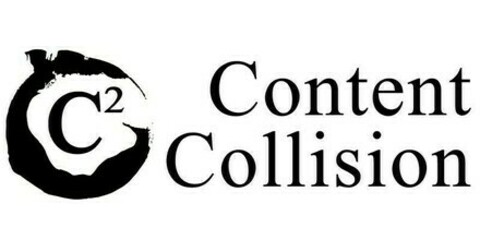Building your martech stack: tips and insights
Discover the step-by-step process of building a martech stack that aligns with your business goals.

A martech stack, short for marketing technology stack, refers to the collection of technology-based tools that marketers use to plan, execute, and measure their marketing campaigns. This ensemble of software can range from email marketing platforms, CRM systems, analytics tools, to social media management apps, each playing a crucial role in the seamless execution of digital marketing strategies.
A typical martech stack might include tools like customer relationship management (CRM) systems such as Salesforce or HubSpot, email marketing platforms like Mailchimp or Constant Contact, social media management tools like Hootsuite or Buffer, content management systems (CMS) like WordPress or Drupal, analytics tools such as Google Analytics or Adobe Analytics, and marketing automation platforms like Marketo or Pardot.
Understanding the components of your martech stack is crucial, as it directly influences the efficiency and effectiveness of your marketing efforts. A well-integrated martech stack enables businesses to deliver a more personalized and engaging customer experience, streamline marketing processes, and achieve better data analysis and insights.

Building a martech stack
In today's complex digital marketing landscape, the construction of a marketing technology (martech) stack is a tale of strategy, foresight, and innovation. Businesses embarking on this journey are not merely selecting tools; they are weaving the very fabric of their future marketing successes.
Here is how to build a martech stack:
Starting from the foundation: identifying needs and goals
The journey begins with a marketing team, ambitious and keenly aware of the challenges ahead. This initial phase is less about identifying what's missing and more about envisioning the future. Teams conduct a deep dive into their marketing objectives, scrutinizing their current tech setup to map out both needs and aspirations. This step is foundational, setting the stage for a transformative approach to marketing efforts.
Tools: Trello, Asana
Tips:
- Start with a comprehensive audit of your current marketing activities and tools to identify overlaps and gaps.
- Involve stakeholders from different departments to ensure the martech stack aligns with broader business objectives.
The quest for tools: market research and selection
With a clear vision in place, the search for the right tools becomes a mission. In this critical stage, teams embark on a rigorous process of market research, evaluating potential tools for their ability to integrate, scale, and satisfy user needs. This quest is both challenging and invigorating, pushing teams to sift through the vast market landscape in pursuit of the perfect martech stack.
Tools: HubSpot, G2 Crowd
Tips:
- Prioritize tools based on your marketing strategy’s core needs (e.g., automation, analytics, customer relationship management).
- Look for tools with strong integration capabilities to ensure smooth interoperability within your stack.
Harmonizing the stack: integration and configuration
Once the tools are chosen, the intricate task of integration begins. This phase is characterized by a meticulous effort to ensure each tool syncs flawlessly with existing systems, creating a seamless flow of information. The success of this stage hinges on achieving a delicate balance, unlocking the potential of the martech stack to operate as a cohesive unit.
Tools: Zapier, Segment
Tips:
- Choose tools with open APIs and extensive documentation to facilitate easier integration.
- Consider hiring a martech specialist or working with vendors that offer integration support to ensure a seamless setup.
Fostering mastery: training and adoption
With the martech stack in place, the focus shifts to the human element. This critical phase involves enlightening the team on the capabilities of the new tools, fostering an environment of exploration and innovation. Through demonstration and hands-on training, teams are encouraged to fully embrace the new technologies, understanding their role in driving the company's marketing goals forward.
Tools: Loom, Slack
Tips:
- Develop a comprehensive training program tailored to different roles within the marketing team.
- Encourage a culture of continuous learning, allowing team members to experiment with new features and functionalities.

Continuous iteration: evaluation and optimization
The final stage marks the beginning of an ongoing cycle of evaluation and optimization. Here, the martech stack is continually assessed for its performance and impact, with a keen eye on areas for improvement. This phase embodies a commitment to growth and adaptability, acknowledging the dynamic nature of both the digital landscape and the martech stack itself.
Tools: Google Data Studio, Feedly
Tips:
- Regularly review the performance of your martech stack against your marketing goals, adjusting as necessary.
- Stay informed about new technologies and trends in the martech space to ensure your stack remains competitive.
Key considerations when building your martech stack
When building your martech stack, consider the scalability of the solutions you choose. As your business grows, your marketing technology should be able to accommodate increased demand and complexity. Compatibility between tools is another critical factor. Ensuring that your technologies can integrate smoothly will save you from headaches down the line.
Moreover, prioritize user-friendliness and support services. Your team's ability to utilize these tools effectively is paramount, and having access to reliable customer support can significantly impact the success of your martech stack.
Martech stacks across different industries
The composition of a martech stack can vary greatly depending on the industry. For instance, e-commerce businesses might prioritize customer relationship management (CRM) systems, e-commerce platforms, and personalization engines to enhance the shopping experience. On the other hand, B2B companies may focus more on lead generation and nurturing tools, such as email marketing software and sales automation platforms.
In the healthcare sector, privacy and compliance tools become significantly more important, alongside patient engagement and management systems. Understanding the unique needs and challenges of your industry is crucial in building an effective martech stack that drives results.
ContentGrow is a managed talent network for brands and publishers to work with high-quality freelance writers and journalists worldwide. Sign up to get started or book a discovery call to learn more.





